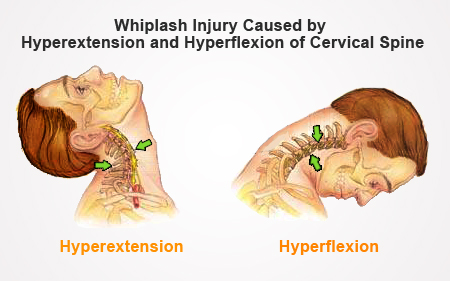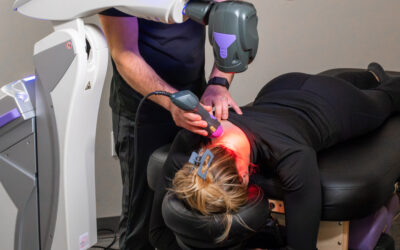
Source: Physio in Motion
Whiplash or WAD (whiplash associated disorder) is a condition that is described as a strain/strain of the soft tissue around the cervical spine stemming from the neck rapidly being thrown backward (hyperextension) and forwards (hyperflexion).
While the muscles of the neck are most commonly affected, other structures, such as the cervical disc, intervertebral joints, and nerve roots, can also be impacted and damaged.
According to Rush, more than 2 million people every year experience whiplash. The severity of whiplash is divided into four grades.
What grade do you fall into?
Grades:
- No complaints or physical signs
- Patient indicates neck complaints but not physical signs
- Patient indicates neck complaints and musculoskeletal signs
- Neck complaints and fracture / dislocation
While car accidents are by far the most common mechanism of injury when it comes to whiplash.
It’s not exclusive.
Contact sports, horseback riding, cycling, and even slip and falls are also common causes of people suffering from this mild to a debilitating condition.
In this blog, we are going to discuss:
• How long does whiplash last
• What can happen if you don’t treat whiplash early
• How Tangelo can help with this condition
 How Long Does Whiplash Last?
How Long Does Whiplash Last?
After an auto accident, it’s common that you won’t notice any whiplash-like symptoms for a few days after the incident.
Furthermore, AICA Orthopedics has reported that it can take up to 6 months to fully recover from WAD.
That said, early intervention is key, and the sooner you seek out a proper evaluation and treatment of your neck pain, the quicker your recovery will be.
In addition to pain around the neck, patients that suffer from whiplash have also reported tightness, pain, and even tingling in the shoulder and upper and mid back.
Like the neck, the best intervention is early intervention. Left unaddressed, tightness will begin to set in, and you will start to alter your movement.
Simple movements like raising your arms overhead when getting a plate out of the cupboard or moving your head to look down at your phone, or looking behind you to grab your coat out of the backseat can become more unbearable and even lead to additional aches, pains, and dysfunctions, which can lead to a recovery time far longer than 6 months.
 What Can Happen When You Don’t Treat Whiplash Early?
What Can Happen When You Don’t Treat Whiplash Early?
Our bodies are constantly adapting to the environment around us. From sitting to working at our desks to training for a marathon, our bodies will adapt to the stimulus placed on them. This can be a good thing but also can lead to a chain reaction. Let’s dive into this potential whiplash chain reaction a little deeper.
As discussed, whiplash is described as rapid hyperextension and hyperflexion of the neck.
When this happens, muscles along the back and front of the neck can be taken through a violent and uncontrolled stretch reflex and can become strained. This strain can lead to mild to severe discomfort, stiffness, and loss of neck range of motion.
When your range of motion has been reduced, you’re thus unable to take your muscles through their full contract-relaxation phase during normal activities of daily living (moving your arms, turning your head, etc.).
This overtime leads to weakness of the muscle, which only amplifies and perpetuates the stiffness even further and creates fundamental changes in how your body moves.
Remember, when something can’t move, something else has to pick up the slack. For example, if your neck is unable to properly flex, extend and rotate due to stiffness and pain, your upper traps (see image below) will have to work overtime.
This will not only eventually create overuse of those muscles but also change what is called the “ortho-kinematics” of your shoulder.
Simply put, it will create improper shoulder mechanics that can lead to issues in or around the shoulder down the line.
As you can see, left untreated, whiplash can develop into other issues that take much longer to recover from. It’s a domino effect.
How Can Tangelo Help?
Again, it’s important to mention that early intervention is key. The sooner you seek medical attention for your whiplash-associated disorder, the sooner you will be back to living life pain-free and without limitations.
Thank you for reading this blog. If you are in pain, make an appointment with Tangelo right away. We have three Seattle locations and one Portland, Oregon, location to serve you. We have been serving our community and helping people get out of pain since 2010.
Our expert team of chiropractors and rehab specialists work with people suffering from whiplash every day and combine the best element of manual therapy with progressive and functional rehabilitation to ensure you are moving the way you’re supposed to.
Reach out and book an appointment today!


